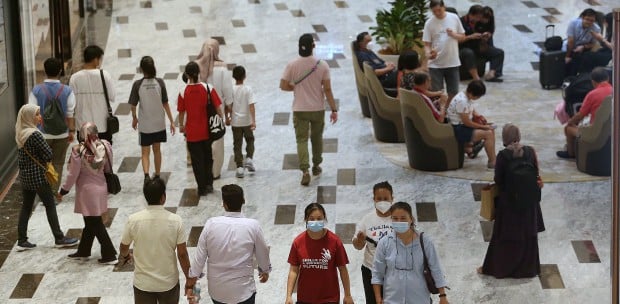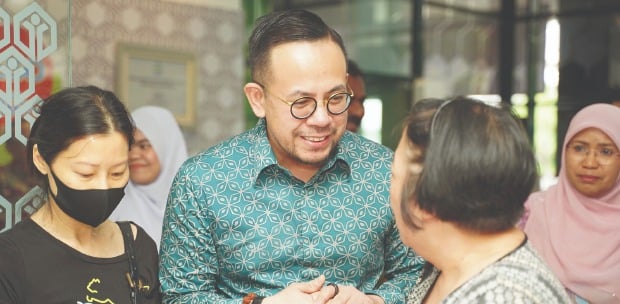THE Covid-19 pandemic has created multiple crises — a morbidity and mortality crisis due to exposure to the virus; an economic crisis stemming from forced global lockdowns; and, a crisis that has revealed the very cracks of society to us, particularly when it comes to social protection.
According to the International Labour Organisation (ILO), the Covid-19 economic crisis is likely to cost over 195 million jobs, with developing countries such as Malaysia the most affected.
We have seen both fiscal and monetary responses from governments totalling US$8 trillion to alleviate the negative impact.
Chief among these measures are social protection responses, with 84 countries introducing or adapting social protection and jobs programmes.
Social protection covers a number of initiatives that affect different segments. Think cash transfers for the low income, pension for the elderly or specific skills training for the youth. It covers social assistance, social insurance and labour market policies.
Social assistance is designed to transfer resources to right segments through tax-financed benefits (cash or in kind), which can be universal, categorical or means tested, including Bantuan Prihatin Nasional, Bantuan Orang Tua and Bantuan Awal Persekolahan, to name a few.
Social insurance is an active precautionary measure one takes against risks. The government can partly finance it, like government pensions, the Employees Provident Fund (EPF) or Social Security Organisation (Socso), with contributions from employees and employers on a regular basis.
Lastly, full or productive employmentis facilitated throughactive labour market policies, labour exchanges and market demands, including wage and hiring subsidy programmes. Evidence shows that countries with sound social protection before the pandemic coped with shocks much better.
We learnt that social protection can act as automatic stabilisers during a crisis, but it needs significant capacity, political will and coordination at all levels to deliver a positive impact.
For starters, public hospitals lead the handling of all cases. As a result, the recovery rate is at 92.7 per cent, among the highest in Asean.
As for the mortality rate, Malaysia is among the lowest in the world at 1.3 per cent. Malaysia's response was also powered by early preparedness, robust contact tracing teams, diagnostic capacity and efficiency, along with strict lockdown measures.
At the forefront is a government that has been clear and coherent in its mitigation plans. The result — Malaysia ranked fourth in an IQI global survey on public approval of the response to the pandemic, ahead of Singapore and Indonesia, tied in seventh position.
A key factor was the government's commitment to establishing a robust public healthcare system that could withstand unprecedented shocks.
Where there are gaps, programmes like PEKA B40 helps cover. Further expenditure layering is possible if citizens are covered by EPF and Socso.
However, Malaysia's social protection system is inadequate to mitigate risks and shocks. We have at least two legacy issues.
First, fragmented and ineffective social assistance programmes. In 2017, the government allocated RM27 billion for social assistance, across 120 programmes under 21 ministries and agencies. Evidently, inequality remains at the same level.
Second, low social insurance coverage and protection. More than 12.8 million working age adults or 55 per cent of the working age population are not covered by any form of statutory contribution (either EPF or Socso). We have the opportunity to protect the people from future vulnerabilities.
The government has laid the early foundations through Bantuan Prihatin Nasional programmes and the reactivation of the Social Protection Council Malaysia.
The next step is to relook, reform and redesign our social protection system. The crazy thing about this virus is that it does not care about our differences.
This calls for all of us to be united as we rebuild. We will bounce back as Malaysia has consistently done before since the May 13 tragedy right up to the present pandemic.
Ultimately, what many see as obstacles due to Covid-19, we should see as opportunities as it may just be the event that Malaysia needs to enhance our social protection framework.
The best practice is to protect people at vulnerable phases of their lives. As spelt out in the ILO Convention 102, it means providing benefits to infants, children, pregnant mothers, the disabled, the invalid, the unemployed, the sick and the elderly.
What we need most is the commitment and consistency of a unified Malaysia to advocate for social protection.
For without commitment, we will never start and without consistency we will never finish.
The writer is president of the Malaysian Economic Association, Emeritus Professor and Director, Social Wellbeing Research Centre (Employees Provident Fund-endowed centre), Universiti Malaya






